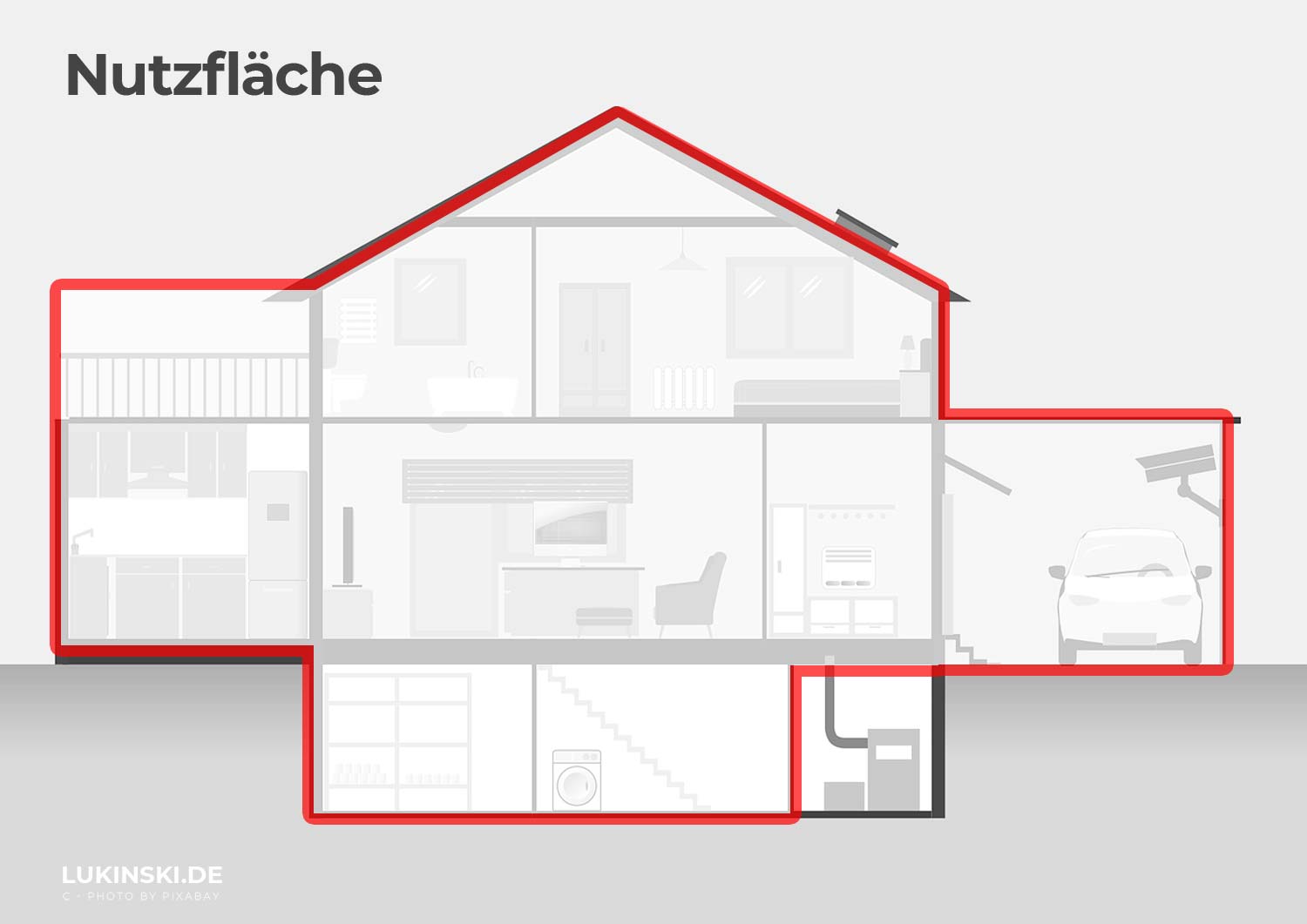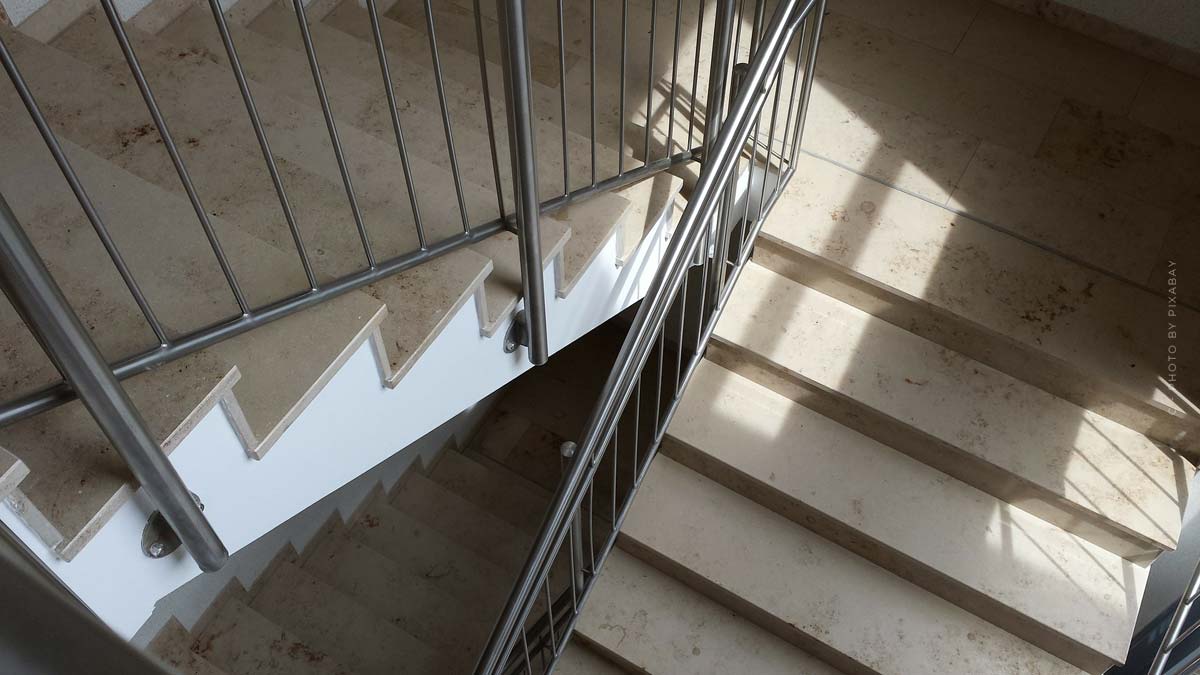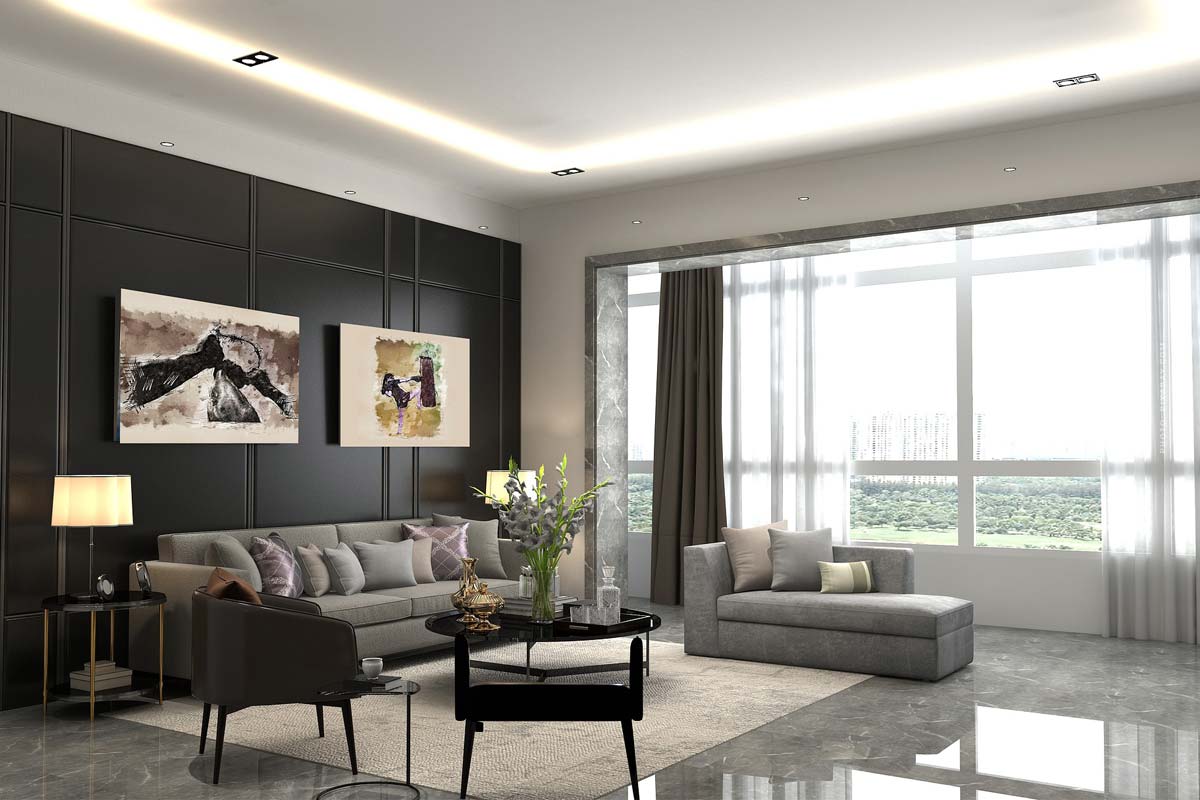Usable space, living space and floor space: difference? This is how it’s simple
Usable space, living space and floor space: what is the difference? – Here you will learn the difference of each area (real estate exposés) and also, a simple “formula” to calculate each area. Important, for example, to calculate the return. No matter whether house or condominium(partial ownership). Learn even more here in the guide: Buying your first apartment.
Usable space, living space and floor space: what is the difference?
Let’s start very simply. You will encounter these values in exposés, in advertisements, in every real estate search. That’s why it’s important to know the difference.
3 Surfaces you will often encounter:
- Footprint
- Useful area
- Living space
The order is chosen specially. Because as you can see here, you come from the 1) floor space to the 2) usable space to the final 3) living space.
Tip. At the end of the article you will also find extra infographics, for clarification
Since there is still a simple “formula” for calculation on the Internet, here in quite simply explained.
Simply expressed as a “formula”:
- Floor area = usable area + circulation area (such as staircase) + functional area (such as boiler room)
- Usable area = Usable area (living area – basement – attic – …)
- Living space = living space (living room + bedroom + …)
Calculate step by step
Let’s look at the process again step by step:
Footprint: Step 1 + Definition
That is, the 1) floor area includes the entire usable area, as well as corridors and staircases (circulation area), and garbage or boiler room (functional area).
This includes all floor areas:
- Living space
- Attic, basement, garages and balconies
- Staircase, corridors, … (so-called traffic area)
- Garbage room, boiler room, … (so-called functional area)
This does not include:
- Plot
Calculate:
Floor area = usable area + circulation area (such as staircase) + functional area (such as boiler room)
Infographic:

Example: All built-up areas, covered areas and upper floors.

Usable area: Step 2 + Definition
After the floor area, consider the 2) usable area, that is, what can really be used in the house or apartment building (for condominiums).
These include, for example:
- Attic
- Basement
- Garages
- Storage rooms (outside the living space)
- Balconies
This no longer includes:
- Staircase, corridors, … (so-called traffic area)
- Garbage room, boiler room, … (so-called functional area)
Calculate:
Usable area = Usable area (living space, basement, attic, …)
Infographic:

Example: Staircase is part of the usable space.

Living space: step 3 + definition
Only then you come to the 3) living space. The living space then indicates the actual habitable space of the property.
Typically only includes:
- Living rooms (bedroom, kitchen, bathroom, living room, etc.)
- Balconies, loggias, terraces and roof gardens are counted at 25%, at most at 50% (§4 WoFlV)
Calculate:
Living space = living space (living room + bedroom + …)
Now you know the difference.
Infographic:

Example: Living room of a condominium.

Summary: Technical terms as infographics
Once again quickly summarized, the areas, simplified summary with infographic.
- Total area (use + traffic + function)
- Traffic area (staircase, corridors in the house)
- Functional area (boiler room, garbage room, etc.)
- Usable area (everything except traffic area / functional area)
- Living space (usable space that is not occupied, example: cellar)
Total area / floor space in the house
Use + traffic + function give the total area.

Usable area in the house
Everything except traffic area / functional area results in the usable area.

Living space in the house
Usable space that is not occupied, example: basement, is called living space.











